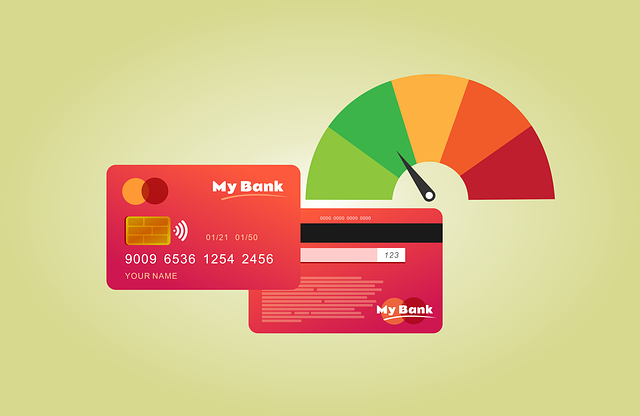Invoice financing offers businesses a unique opportunity to access working capital by utilizing outstanding invoices as collateral, focusing on accounts receivable rather than creditworthiness. Key benefits include flexible terms, potentially lower interest rates, and access to larger amounts compared to traditional loans. However, it comes with higher fees and potential delinquencies if customers fail to pay invoices on time. The process involves specialized providers assessing invoice quality and collectability, providing faster funding. To apply, businesses should research providers, prepare detailed financial records, and address past payment issues. Invoice financing is ideal for SMEs with robust cash flow and outstanding invoices, helping them optimize cash flow management and support growth strategies.
Looking to streamline your business cash flow with invoice financing? This comprehensive guide dives into the application process and explores the fine points of this popular funding option. From understanding the benefits and drawbacks of invoice financing versus traditional loans to navigating the inner workings and identifying top providers, we’ve compiled a step-by-step resource. Discover how invoice financing can unlock working capital and facilitate your business’s growth.
- Understanding Invoice Financing: Unlocking Working Capital
- Invoice Financing vs Traditional Loans: Weighing Your Options
- The Inner Workings: How Invoice Financing Facilitates Cash Flow
- Benefits and Drawbacks: A Comprehensive Look at Invoice Financing
- Navigating the Application Process: Step-by-Step Guide
- Top Invoice Financing Providers: Who's Out There to Help?
Understanding Invoice Financing: Unlocking Working Capital

Invoice financing offers a unique opportunity for businesses to unlock their working capital by utilizing outstanding invoices as collateral. Unlike traditional loans that rely on creditworthiness, this alternative funding method focuses on the financial health of your business through its accounts receivable. Understanding invoice financing can be key to accessing benefits that are often not available with bank loans, such as more flexible terms and potentially lower interest rates.
When considering how invoice financing works, it’s important to weigh the pros and cons. On one hand, it provides quick access to cash flow without putting your assets at risk. On the other hand, there may be higher fees attached to the service compared to traditional loans. Applying for invoice financing involves working with providers who evaluate your invoices’ value and offer funding accordingly. This method can be particularly beneficial for businesses that depend on timely payments from clients, offering a more efficient way to manage cash flow than waiting for payments to clear.
Invoice Financing vs Traditional Loans: Weighing Your Options

When considering funding options for your business, understanding the differences between invoice financing and traditional loans is key. Invoice financing offers a unique approach to accessing capital by leveraging outstanding invoices. Instead of providing direct loans, financing companies advance funds against these invoices, with repayment tied to customer payments. This method provides several benefits, such as flexible terms, no collateral required, and the ability to access larger amounts compared to typical business loans. It’s particularly advantageous for businesses with strong cash flow but limited credit history or assets.
Traditional loans, on the other hand, involve borrowing a fixed amount of money from banks or lenders with regular interest payments over a defined period. While they offer stability and predictable repayment schedules, they may require collateral, have stringent eligibility criteria, and often come with higher interest rates. In contrast, invoice financing is more adaptable, allowing businesses to tap into their accounts receivable for immediate financial support. However, it’s essential to consider the pros and cons—pros like quick funding and no personal guarantee required—but also potential drawbacks such as higher fees and the risk of delinquencies if customers fail to pay invoices on time. Exploring various invoice financing providers can help businesses make an informed decision based on their unique financial needs and goals.
The Inner Workings: How Invoice Financing Facilitates Cash Flow

Invoice financing is a financial solution that provides businesses with an efficient way to manage their cash flow and access working capital. Unlike traditional loans, which often require collateral and have strict eligibility criteria, invoice financing is tailored for businesses with outstanding invoices. It allows companies to convert these invoices into immediate cash by selling them to specialized providers at a discount. This process offers several benefits, including faster access to funds compared to conventional loan methods.
When a business applies for invoice financing, the provider will assess the quality and collectability of the invoices. Once approved, the provider purchases these invoices at a percentage discount, providing the business with immediate funding. The key advantage lies in its flexibility, as businesses can release cash from invoices that are yet to be paid by customers, thereby bridging the gap between rendering services or delivering goods and receiving payment. This method is especially useful for companies with seasonal revenue fluctuations or those requiring rapid access to capital for expansion or unexpected expenses. However, it’s important to weigh the pros and cons, as invoice financing may involve higher fees and interest rates compared to traditional loans, and businesses must ensure they have a steady stream of high-quality invoices to maintain a healthy cash flow.
Benefits and Drawbacks: A Comprehensive Look at Invoice Financing

Invoice financing offers a unique alternative to traditional loans, providing businesses with access to capital tied to their outstanding invoices. One of its key benefits is that it allows companies to tap into their future revenue streams, offering a more flexible and less restrictive funding option compared to bank loans. This can be particularly advantageous for small and medium-sized enterprises (SMEs) looking to manage cash flow during peak demand periods or expand their operations without incurring significant debt. The application process typically involves submitting details of your outstanding invoices and financial records, making it relatively straightforward for eligible businesses to secure funding quickly.
However, there are also drawbacks to consider. Invoice financing can be more expensive than conventional loans due to the added costs associated with factoring in late payments and potential chargebacks. Additionally, some invoice financing providers may have strict eligibility criteria, limiting access to SMEs with less established credit histories or volatile revenue patterns. Moreover, businesses should carefully review the terms and conditions of each provider to understand the full scope of fees and interest rates, as these can vary significantly. Despite these challenges, for businesses with strong invoice pipelines, invoice financing can be a powerful tool to optimize cash flow management and support growth strategies.
Navigating the Application Process: Step-by-Step Guide

Navigating the application process for invoice financing involves several steps designed to assess your business’s financial health and match it with suitable providers. First, understand the invoice financing benefits compared to traditional loans. Invoice financing provides working capital by advancing against outstanding invoices, with repayment tied to customer payments. This method offers flexible terms, quicker access to funds, and potential cost savings over interest-based loans. However, it comes with pros and cons, such as potential fees based on invoice value and collection risks if customers default.
When ready to apply, thoroughly research invoice financing providers to find those aligned with your business needs. Prepare detailed financial records, including invoices, accounts receivable, and cash flow projections. Fill out application forms accurately, providing information about your business, industry, and financial history. Be prepared to explain any past payment issues or delinquencies. After submission, expect a review period during which providers assess your risk profile and match you with suitable funding options based on invoice value, customer creditworthiness, and other factors.
Top Invoice Financing Providers: Who's Out There to Help?

In today’s digital era, businesses are constantly seeking innovative ways to optimize cash flow and gain a competitive edge. One such solution gaining traction is invoice financing. This alternative to traditional loans offers several benefits tailored to the needs of modern enterprises. Unlike conventional loans that often require collateral and strict repayment terms, invoice financing leverages outstanding invoices as collateral, providing businesses with much-needed liquidity quickly and efficiently.
When exploring invoice financing, it’s crucial to understand the landscape and identify reputable providers who can offer tailored solutions. Top invoice financing providers specialize in evaluating and funding accounts receivable, making the process seamless for business owners. They streamline how invoice financing works by assessing a company’s invoice portfolio, determining their ability to repay, and advancing funds accordingly. By considering the pros and cons of invoice financing, businesses can make informed decisions, ensuring they choose the right provider that aligns with their growth objectives. Applying for invoice financing is typically straightforward, involving the submission of invoices and relevant business information, making it an attractive option for those seeking flexible funding solutions without the constraints of traditional loans.






